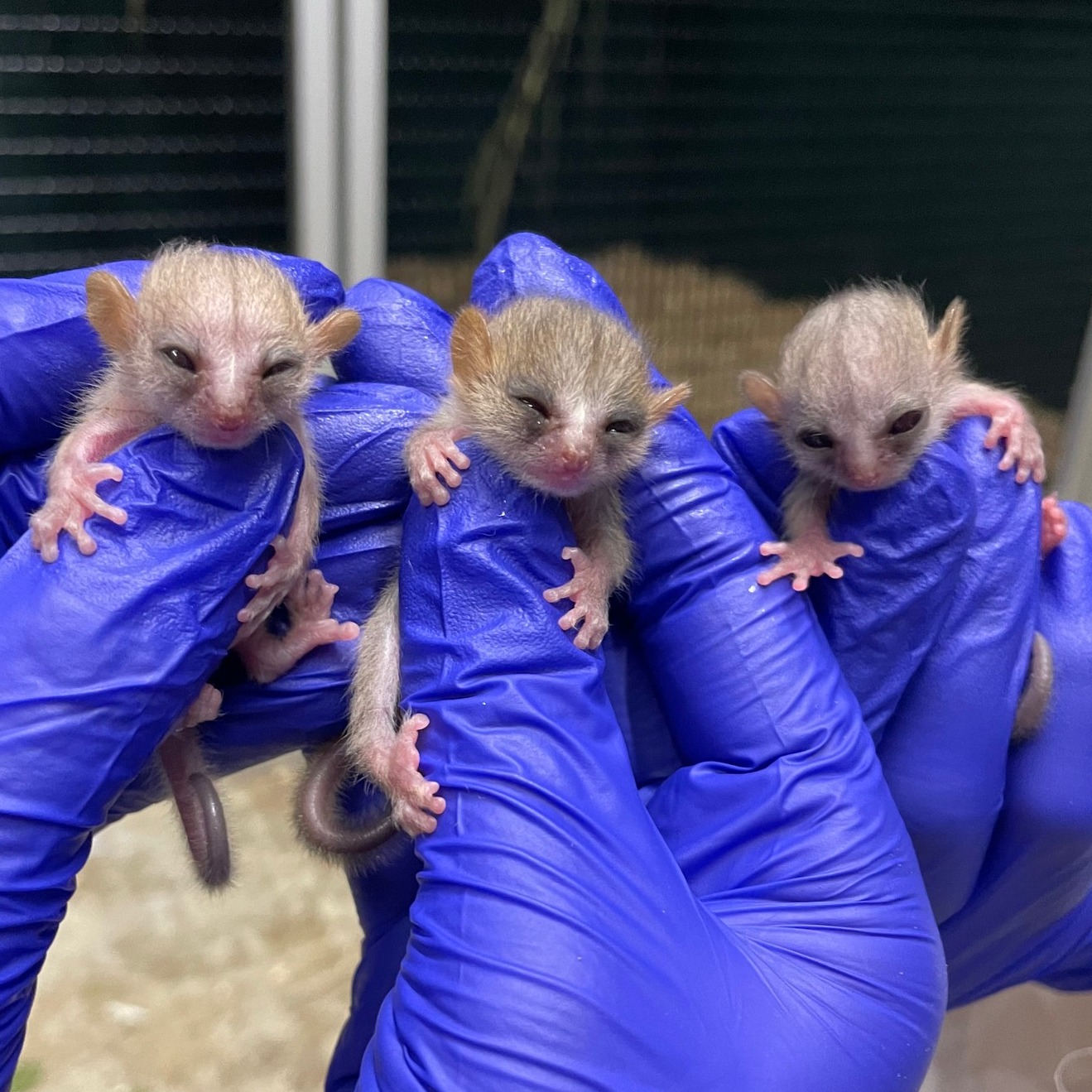Summary:
– Two sets of gray mouse lemur triplets were born last month, bringing excitement to the zoo.
– The six infants are named after plants, with Fauna’s triplets named after toxic plants.
– Photos and more information about the infants are on the zoo’s official website.
Three is a magic number, and this recent news from the zoo proves it! Last month, not one but two sets of gray mouse lemur triplets were born, bringing joy and excitement to the animal care staff and visitors alike. These tiny creatures, named after plants, have already captured the hearts of many. Let’s look at these fascinating infants and learn more about their world.
Let’s begin with the first set of triplets born to mom Tumbleweed. Tumbleweed gave birth to two sons and one daughter, Jack Frost, Seaweed, and Cattail, respectively. Only two days old in the provided photo, these little ones already showcase their unique characteristics. Their big, round eyes and fluffy fur make them irresistible. It’s incredible to witness the bond between the mother and her offspring as Tumbleweed carefully nurtures and protects them.
Moving on to the second set of triplets, we have Mom Fauna to thank for their arrival. Fauna initially expected twins, but she surprised everyone by giving birth to two sons and one daughter. Fauna’s triplets share their names with toxic plants: Wolfsbane, Jimson Weed, and Belladonna. While these names may seem unconventional, they add an intriguing twist to their story.
Let’s delve further into the lives of these pint-sized lemurs. Gray mouse lemurs are native to Madagascar, an island with unique biodiversity. Despite their small size, they play a vital role in the ecosystem by dispersing seeds and controlling insect populations. These lemurs are known for their nocturnal habits and incredible climbing skills. Their dexterous hands and specialized toes allow them to easily explore their surroundings, making them true acrobats of the animal kingdom.
The birth of these triplets allows us to reflect on the importance of conservation efforts. Like many other wildlife species, gray mouse lemurs face numerous threats in the wild, including habitat loss and fragmentation. By raising awareness and supporting conservation initiatives, we can help ensure the survival of these incredible creatures for future generations to appreciate.
Now, let’s look at the adorable photos accompanying this article. In the first image, we see Jack Frost, Seaweed, and Cattail at just two days old. Their tiny bodies fit snugly together, showcasing their sibling bond from the very beginning. It’s heartwarming to see them so close-knit, even at a young age.
The second photo features Cattail, a month after birth, weighed in a Tupperware container. This routine procedure helps the animal care staff monitor their growth and health. Don’t let the Tupperware fool you; Cattail looks precious as they curiously peek out from the container. It’s a reminder of the dedication and care provided by the zoo’s staff to ensure the well-being of each animal.
In the next snapshot, we have Jack Frost, captured again at two days old. His wide-eyed gaze captures the curiosity and innocence of these infant lemurs. Their curiosity and playfulness make them a delight to watch as they explore their surroundings with the utmost enthusiasm.
In the fourth photo, Seaweed showcases the astonishing growth and development that occurs in just one month. It’s fascinating to witness their transformation from a tiny newborn to a slightly bigger and more independent lemur. Seaweed is a testimony to the resilience and adaptability of these remarkable creatures.
Now, let’s move to the last photo, which displays the toxic plant named triplets: Wolfsbane, Jimson Weed, and Belladonna. At just a couple of weeks old, they showcase their unique personalities. It’s a reminder of the endless wonders and surprises nature offers. Their names may seem dangerous, but these little ones are perfectly safe under the watchful eyes of their mother and the dedicated zoo staff.
In conclusion, the recent birth of two gray mouse lemur triplets has brought joy and wonder to the zoo and its visitors. These tiny infants, named after plants, captivate our hearts with their cuteness and remind us of the importance of conservation. They are a testament to the magic of nature and the complex web of life that surrounds us. Let’s cherish and protect these enchanting creatures, which are key to our planet’s future.
*****
Source Description
Three is a magic number! ✨
We’re excited to announce that TWO gray mouse lemur triplets were born last month! Mom Tumbleweed gave birth to two sons and one daughter: Jack Frost, Seaweed, and Cattail. Mom Fauna was expecting twins, but she surprised our animal care staff by welcoming two sons and a daughter: Wolfsbane, Jimson Weed, and Belladonna. All six of these teeny infants are named after plants; Fauna’s triplets specifically share their names with toxic plants 🌺🌾🌿
Want to see more precious photos and learn more about these itty bitty infants? Visit lemur.duke.edu/mouse-lemur-triplets-2023 to read their official birth announcement! 📝
📸:
1 – Jack Frost (left), Seaweed (middle), and Cattail (right) at two days old [Maddie P.]
2 – Cattail at one-month-old, inside of a Tupperware container for a routine weighing [David Haring]
3 – Jack Frost at two days old [Maddie P.]
4 – Seaweed at one-month-old [David Haring]
5 – Wolfsbane, Jimson Weed, and Belladonna at a couple of weeks old [Jodi S.]
6 – Belladonna at two days old, only 5.6 grams, clinging to an animal caretaker’s finger [Jodi S.]


